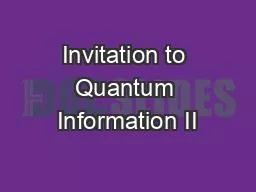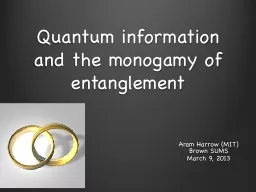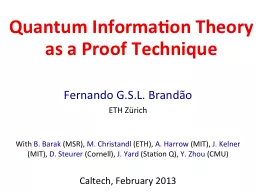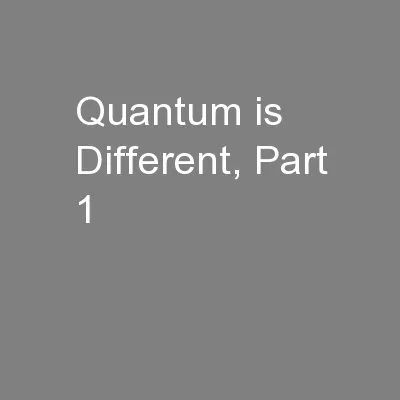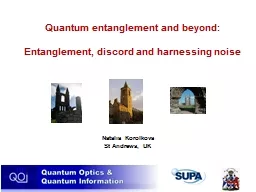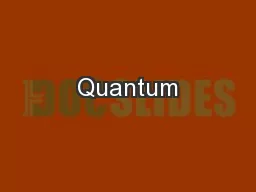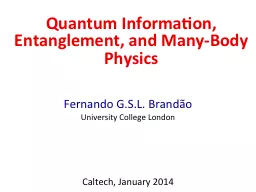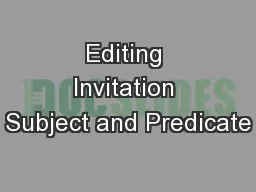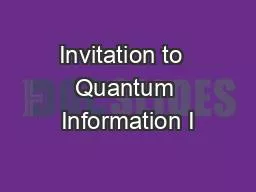PPT-Invitation to Quantum Information II
Author : nullitiva | Published Date : 2020-06-30
Daniel Reitzner Research Center for Quantum Information Slovak Academy of Sciences 1st eduQUTE school on quantum technologies Bratislava 1922022018 Recapitulation
Presentation Embed Code
Download Presentation
Download Presentation The PPT/PDF document "Invitation to Quantum Information II" is the property of its rightful owner. Permission is granted to download and print the materials on this website for personal, non-commercial use only, and to display it on your personal computer provided you do not modify the materials and that you retain all copyright notices contained in the materials. By downloading content from our website, you accept the terms of this agreement.
Invitation to Quantum Information II: Transcript
Download Rules Of Document
"Invitation to Quantum Information II"The content belongs to its owner. You may download and print it for personal use, without modification, and keep all copyright notices. By downloading, you agree to these terms.
Related Documents

